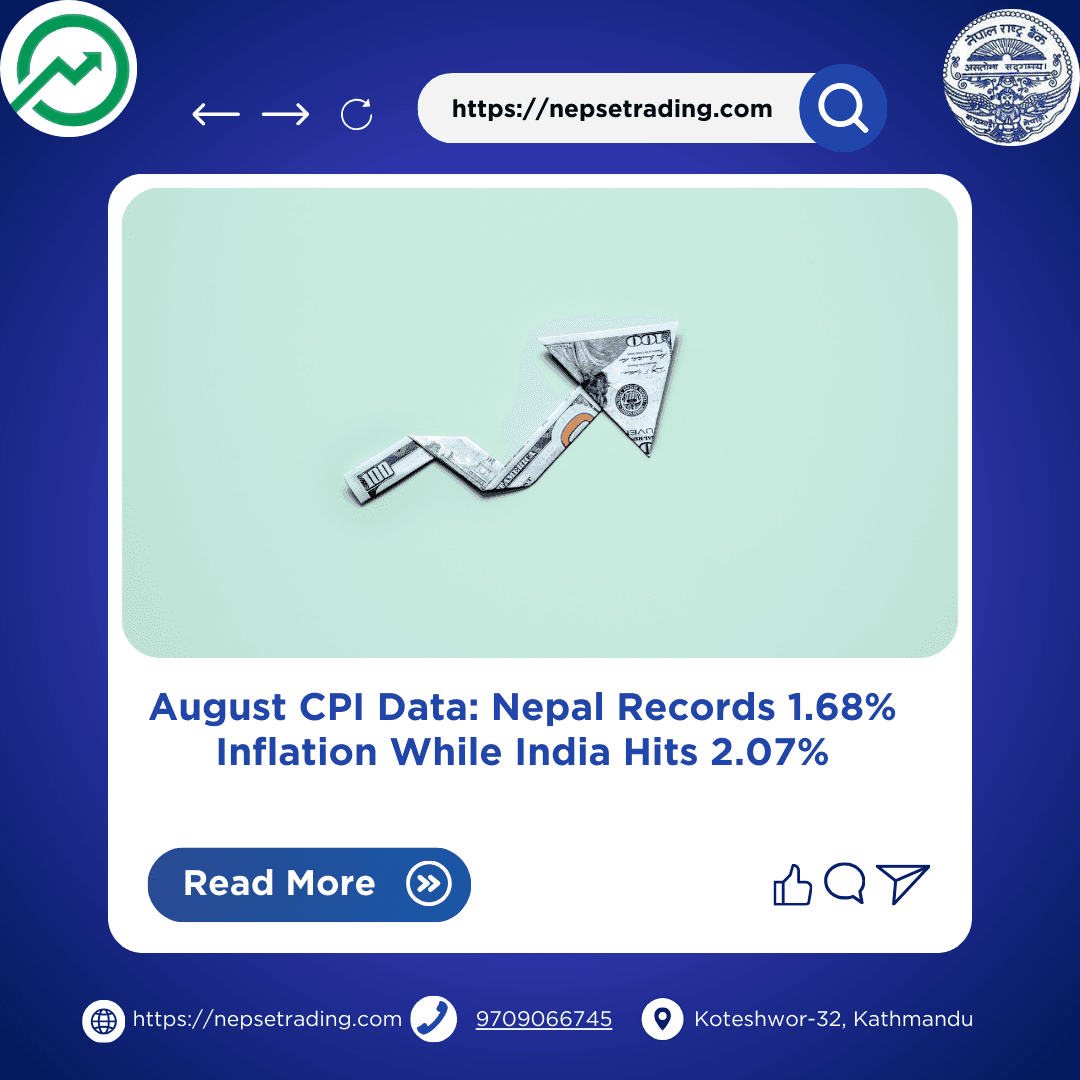By Sandeep Chaudhary
August CPI Data: Nepal Records 1.68% Inflation While India Hits 2.07%

The latest August 2025/26 CPI data highlights a historic shift in South Asia’s inflation trends. For the first time in four years, Nepal’s inflation fell below India’s, with Nepal recording 1.68% year-on-year inflation, compared to India’s 2.07%. This represents a -0.39 percentage point deviation, showing how the two economies—though closely linked—are currently experiencing different inflationary pressures.
In Nepal, the slowdown is largely driven by falling food prices, especially cereals and vegetables, thanks to favorable harvests and stable imports. This has eased the financial burden on households, bringing CPI growth down to its lowest level in years. However, non-food and services costs—including housing, utilities, healthcare, and education—continue to rise, suggesting that structural service-driven inflation is still present beneath the headline slowdown.
India, on the other hand, recorded higher inflation at 2.07%, reflecting agricultural price pressures linked to uneven monsoon conditions, along with steady rises in service-related costs. While the gap between the two countries is small, it marks a significant reversal of the past trend where Nepal consistently recorded higher inflation than India (averaging +1.68 percentage points higher in 2022/23 and +0.34 points in 2023/24).
For households in Nepal, the decline in food inflation offers short-term relief in grocery expenses, while for investors and policymakers, the trend suggests a need to monitor non-food inflation risks that may re-emerge later in the year. Regionally, the convergence and reversal of inflation rates highlight how cross-border economies move together but can diverge due to domestic supply and weather shocks.









